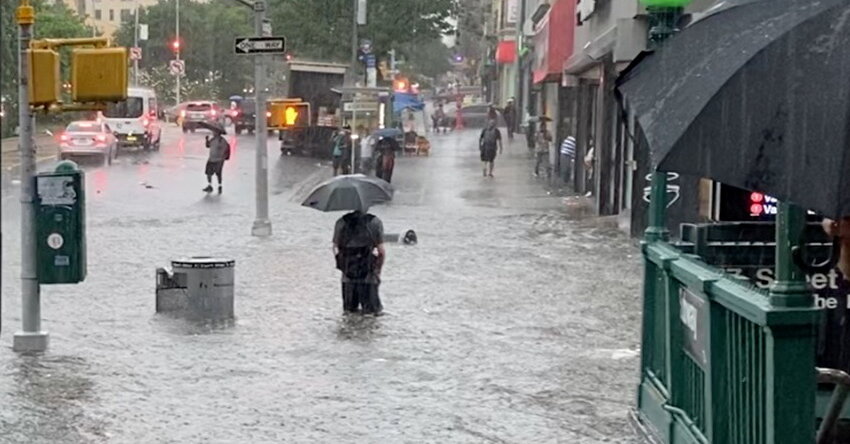
Sarah Feinberg, the interim subway chief, said subway service continued uninterrupted in most of the system despite the challenges from the flash flooding. Even in stations where one entrance was submerged in water, other entrances were available and trains continued to run.
“Throughout the storm, we continued to run service,” she said in an interview on Friday.
But social media posts captured the soggy mess, drawing outrage from many riders and city officials. In one video, a woman plunged waist-high into dark, swirling waters at the entrance to the 157th Street station in northern Manhattan. In another, men stepped into garbage bags and tried to hop potato-sack style to the turnstiles.
“This cannot be New York,” Eric Adams, the Brooklyn borough president and the Democratic candidate for mayor, wrote in a tweet, blaming the M.T.A. “This is what happens when the M.T.A. makes bad spending decisions for decades.”
Mr. Adams added that a state-approved congestion pricing plan that he supports, and that would help pay for critical subway repairs by charging fees to drive into certain parts of Manhattan, was needed as soon as possible “to protect stations from street flooding, elevate entrances and add green infrastructure to absorb flash storm runoff.”
Ms. Feinberg said that she had talked to Mr. Adams on Friday and had a productive conversation. Evan Thies, a spokesman for Mr. Adams, said that Mr. Adams “looked forward to working with Ms. Feinberg on mass transit issues.”
Even with the many upgrades that the M.T.A. has put in place since Sandy, some resiliency experts like Klaus Jacob, a geophysicist at Columbia University’s Earth Institute, say that the system is still susceptible, and that in the long run it will need a far more significant overhaul.
Before Sandy hit, Dr. Jacob’s research on the subway system predicted much of the flooding that has since unfolded. His studies modeling future floods have found that the upgrades are effective but need more backup measures, because, he says, breaches at just a few weak points could lead to widespread flooding and malfunctions.


Average Rating